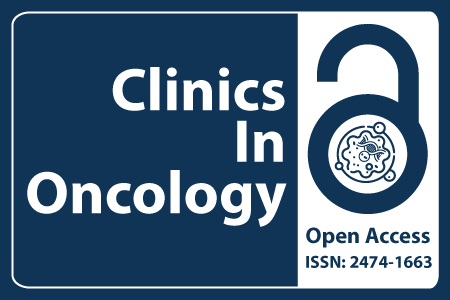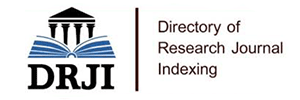
Journal Basic Info
**Impact Factor calculated based on Google Scholar Citations. Please contact us for any more details.Major Scope
- Breast Cancer
- Bladder Cancer
- Central Nervous System Tumors
- Surgical Oncology
- Carcinomas
- Urological Cancers
- Neoadjuvant Therapy
- General Oncology
Abstract
Citation: Clin Oncol. 2021;6(1):1845.DOI: 10.25107/2474-1663.1845
Relation between Environmental, Lifestyle, Medical and Hormonal Risk Factors and Thyroid Tumour: A Cross-Sectional Study
Mariangela Mazzone, Maria C Di Marcantonio, Emira D'amico, Luisa Stellin, Margherita Legnini, Alberto D’aulerio, Luca Napolitano, Roberto Cotellese, Raffaella Muraro, Anna C Frigo and Gabriella Mincione
Department of Innovative Technologies in Medicine and Dentistry, ‘G. d’Annunzio’ University of Chieti-Pescara, Italy
Department of Medical, Oral and Biotechnological Sciences, ‘G. d’Annunzio’ University of Chieti-Pescara, Italy
Department of Medicine and Aging Sciences, G. d’Annunzio’ University of Chieti-Pescara, Italy
Division of Emergency Surgery, ‘SS Annunziata’ Hospital, Italy
Division of General Surgery, ‘SS Annunziata’ Hospital, Italy
Department of Cardiac-Thoracic-Vascular Sciences, University of Padua, Italy
*Correspondance to: Gabriella Mincione
PDF Full Text Research Article | Open Access
Abstract:
Improvements to diagnostic techniques, medical surveillance and screening have allowed early detection of small asymptomatic thyroid lesions, although incidence of large thyroid cancers has increased. The role of environmental, lifestyle, medical and hormonal factors in thyroid cancer development remain under discussion. The aim of this study was to define associations between environmental, lifestyle, medical history and hormonal factors and thyroid tumors. This retrospective cross-sectional population-based study evaluated 246 patients admitted to the ‘SS. Annunziata’ Hospital in Chieti (Italy) for total thyroidectomy or lobectomy. Twenty-eight variables were collected using questionnaires and clinical records. Logistic regression analysis was used to analyze associations between these patient variables and thyroid histology, to identify novel risk factors, and to generate a multivariate model for thyroid tumour risk assessment. Univariate logistic regression analysis showed significant difference in median age for goiter versus thyroid tumour (Odds Ratio [OR], 0.980; 95% Confidence Interval [CI], 0.962-0.998; P=0.033). Multivariate logistic regression analysis showed hyperthyroidism significantly associated with lower risk of thyroid tumour (hyperthyroidism versus hypothyroidism: OR, 0.174; 95% CI, 0.044-0.694; euthyroidism vs. hypothyroidism: OR, 1.760; 95% CI, 0.678-4.560; P<0.001). These data are supported by significant association with the respective thyroid treatments (in therapy: OR: 0.242; 95% CI, 0.128-0.458; P<0.001). Higher risk of thyroid tumour was significantly associated with single nodule versus
multinodular lesions (uninodular: OR: 4.910; 95% CI, 2.240-10.800; P<0.001). Our results suggest that hyperthyroidism and the presence of multinodular lesions represent conditions infrequently associated with thyroid tumors.
Keywords:
Cite the Article:
Mazzone M, Di Marcantonio MC, D'amico E, Stellin L, Legnini M, D’aulerio A, et al. Relation between Environmental, Lifestyle, Medical and Hormonal Risk Factors and Thyroid Tumour: A Cross-Sectional Study. Clin Oncol. 2021;6:1845..













